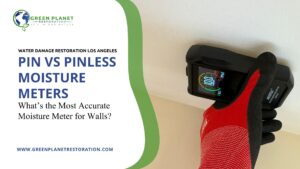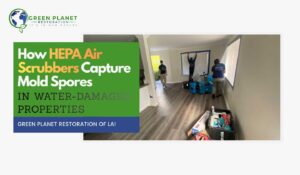Rain is part of life in Seattle, but when that moisture finds its way into your home, especially through a roof leak, or an overflowing gutter, or a burst pipe, not only your carpet takes a big hit, but also your nerves. At this point you need to pull water out fast and get your home back to normal. Truck mounted extractors offer a powerful solution. Unlike rental machines or shop vacs, these units deliver industrial-grade suction and heat that can pull gallons of water from deep within your carpet in a matter of minutes. In this guide, we discuss how truck mounted extractors remove water from carpets and why they are a superior choice for restoring water damage.
How Truck Mounted Extractors Work
Homeowners in neighborhoods like Greenwood, Beacon Hill, and Capitol Hill often deal with soggy carpets that hold on to water long after the source is fixed. If left untreated, this moisture becomes a breeding ground for mold, mildew, and permanent odors.
Truck mounted extractors are heavy-duty carpet cleaning systems attached to a restoration vehicle. They use a combination of hot water, cleaning agents, and industrial-grade suction to clean and extract water from carpets effectively.
Here’s what happens during the process:
- Hot Water Injection: Water is heated inside the truck to a high temperature and mixed with a cleaning solution. This hot mixture is sprayed deep into the carpet fibers to loosen dirt, contaminants, and bacteria.
- Agitation and Breakdown: The heated solution penetrates the carpet backing, softening residues, breaking up embedded dirt, and lifting grime trapped by water damage.
- High-Powered Suction: A vacuum line then extracts the water, cleaning solution, and debris in one pass. This is where truck mounted extractors outperform portables. The suction power is simply far more, resulting in deeper extraction and faster drying.
- Water Storage: All extracted water is circulated through sealed hoses back to the truck and stored in a waste tank, keeping dirty water out of your home.
- Faster Drying Time: With most of the moisture removed, carpets dry much faster, reducing the risk of mold, mildew, and permanent damage.
When to Use a Truck Mounted Extractor in Seattle
If you are dealing with severe water damage – say, more than a few square feet of soaked carpet – an extractor is the right tool. Truck mounted extractors are preferred for deeper water removal because of their stronger suction and heat capabilities. It’s especially effective in:
- Basement carpet flooding due to heavy rain or groundwater flooding
- Overflowing appliances like dishwashers or washing machines
- Pipe bursts, which are common during winter freeze-thaw cycles in Seattle, WA.
- Storm-related flooding in older homes with poor drainage
For Seattle homeowners, time is of the essence. Waiting too long can mean replacing the carpet and padding altogether. And not to mention dealing with hidden mold growth that spreads beneath the surface.
Did sewage or floodwater soak into your drywall? Learn Why You Must Replace Sewage-Damaged Drywall And How to Do It
Common Questions About Truck Mounted Carpet Extractors
How Does a Truck Mount Carpet Cleaner Work?
It draws water from a clean tank, heats it, mixes it with a detergent, sprays it onto the carpet, and then immediately extracts the water and grime using vacuum suction. The dirty water is stored in a separate tank in the truck.
What Is the Difference Between a Steam Cleaner and a Carpet Extractor?
Steam cleaners use vapor and less water, primarily for sanitizing. Carpet extractors – especially truck mounted units – use hot water and high-pressure suction to clean and remove water from carpets, making them more suitable for water damage recovery.
How Long Does a Truck Mounted Carpet Extractor Last?
With regular maintenance, an industrial-grade truck mounted extractor can last 10 to 15 years. The longevity depends on usage frequency, water hardness, and whether filters and tanks are cleaned regularly.
Pro Tip for Seattle Homeowners
Rain isn’t your only concern – Seattle’s older plumbing systems are equal culprits in residential flooding. If you live in a house built before 1970, schedule annual inspections for pipe wear and tear. Consider a basement sump pump installation. These preventative steps reduce your risk of needing major water extraction in the future.
Water-Soaked Carpet? Here’s Your Next Step
Truck mounted extractors are not only fast – they are precise. If your carpet’s been saturated, don’t wait for mold to take hold. Immediate professional intervention can save the flooring and prevent long-term damage to your subfloor or walls.
Read Seattle’s water damage restoration process to understand what steps follow extraction.
If you are already dealing with soaked carpets, contact Seattle water damage restoration experts now.
Water doesn’t wait. Neither should you. Protect your home and your health.
___________________
Related Posts
Complete Guide to Crawl Space Maintenance and Cleanup
Effective Thermal Fogging for Odor Removal
8 Common Causes of Household Water Leaks and Water Damage
How LGR Dehumidifiers Prevent Secondary Damage
How Moisture Meters Prevent Mold Growth










